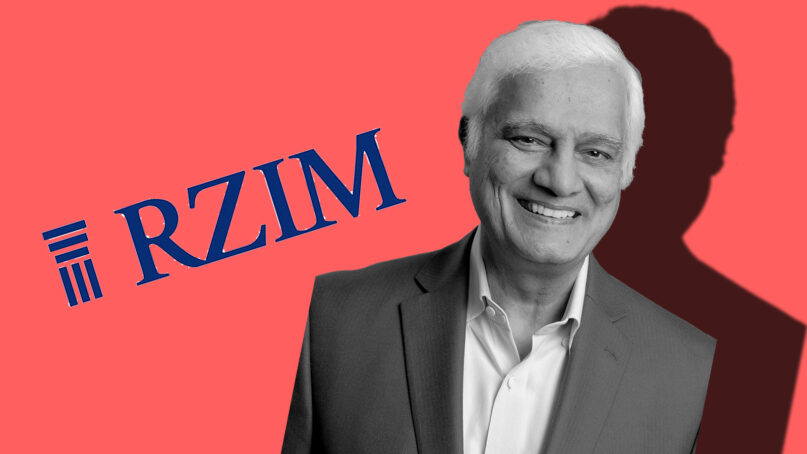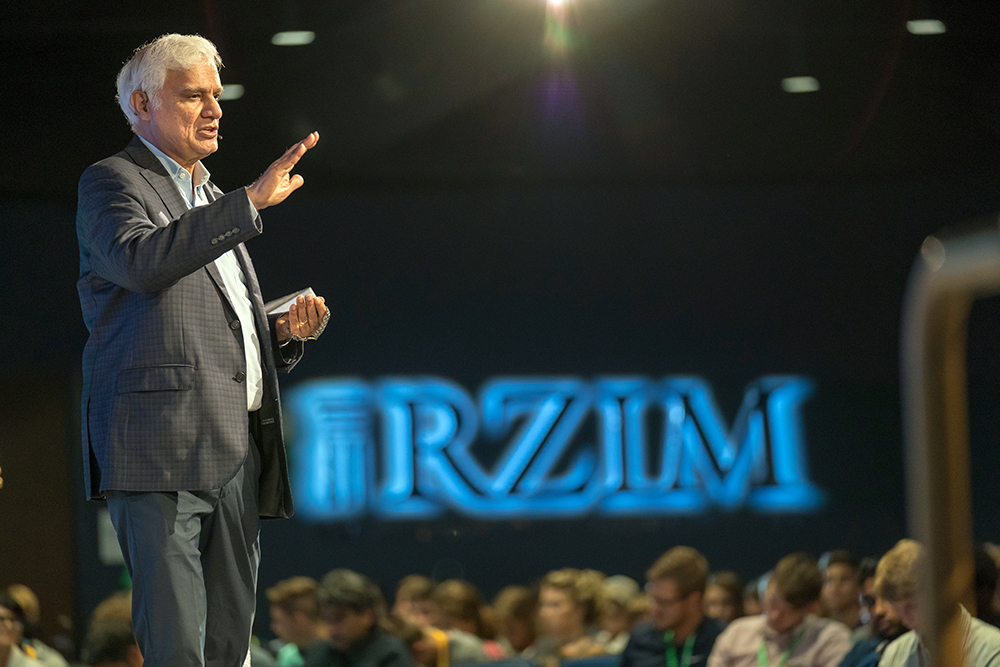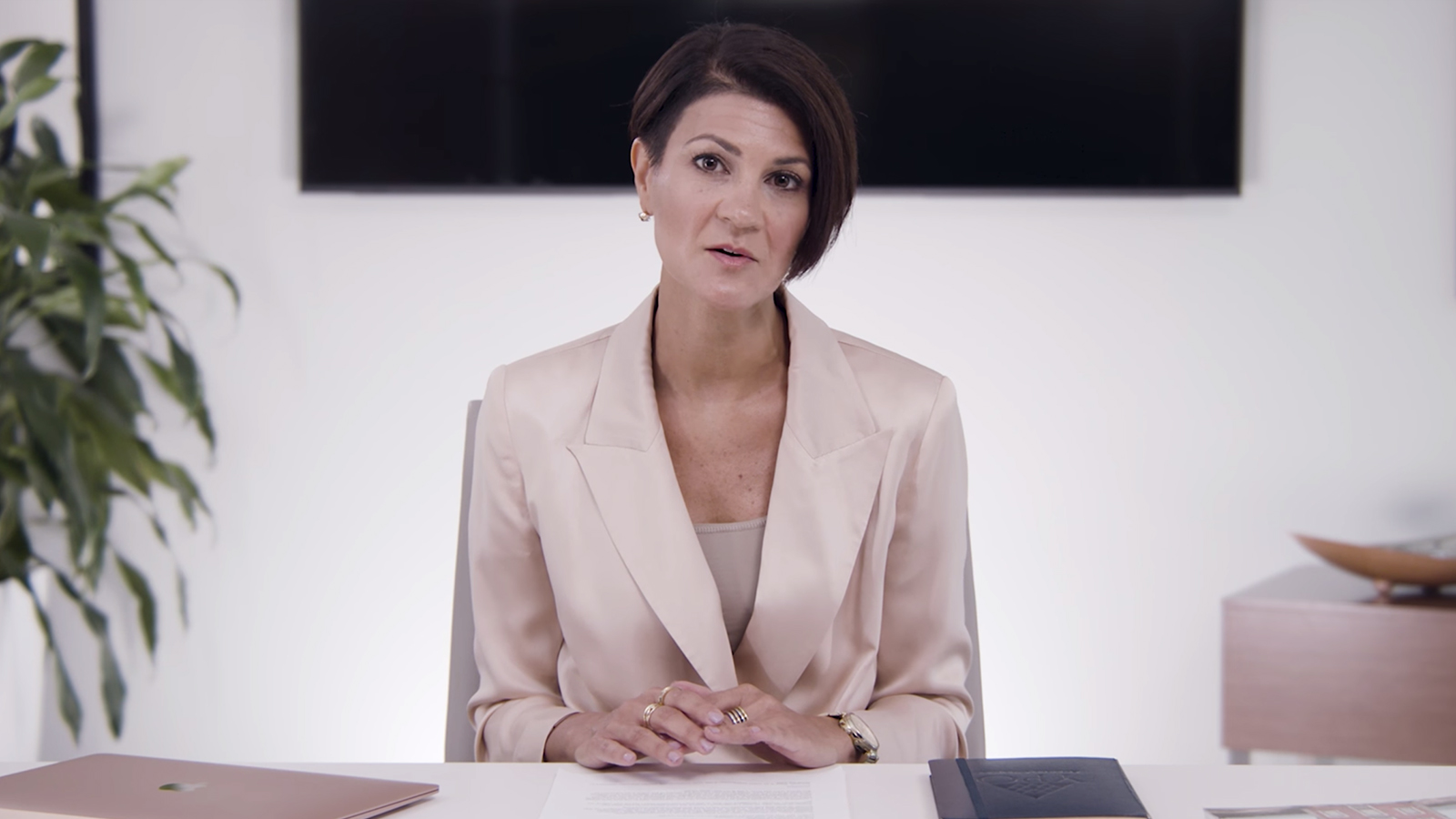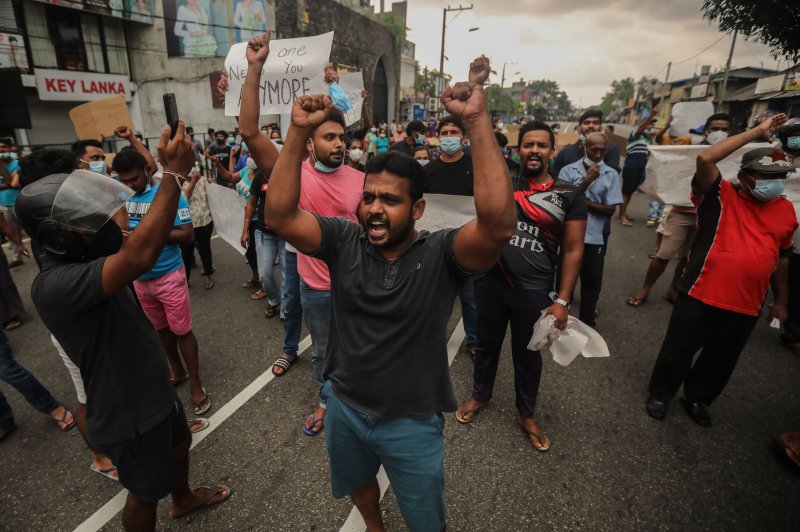CHRISTIANITY IS PATRIARCHY
Former Christianity Today editor Mark Galli accused of sexual harassment
Two new reports say the famed evangelical magazine failed to hold senior leaders accountable for sexual harassment and made women employees feel unappreciated and unsafe.

(RNS) — The former editor of a prominent evangelical magazine who made national headlines for criticizing Donald Trump’s failed character has been accused of sexual harassment during his tenure as editor.
A new report from Christianity Today magazine, published Tuesday (March 15), claims the Carol Stream, Illinois-based ministry failed to hold former editor-in-chief Mark Galli and former CT advertising director Olatokunbo Olawoye accountable for sexual harassment for more than a decade.
That harassment included “demeaning, inappropriate, and offensive behavior,” according to the report from CT’s news editor Daniel Silliman, which was edited by senior news editor Kate Shellnutt and published without review from the ministry’s executive leadership.
Silliman reported finding a dozen firsthand accounts of harassment.
“Women at CT were touched at work in ways that made them uncomfortable,” according to the CT news story. “They heard men with authority over their careers make comments about the sexual desirability of their bodies. And in at least two cases, they heard department heads hint at openness to an affair.”
Eight women alleged that Galli touched them inappropriately, including one former employee who said Galli caressed her bare shoulder during an event in the early 2000s, while another said Galli’s hand got “stuck under her bra” when he rubbed her back.
According to the report, Galli was reprimanded in 2019 after three women in three days reported to human resources that he’d inappropriately touched them — allegedly hugging a woman from behind, grabbing another woman by the shoulders and shaking her and putting a hand on another woman’s butt.
However, the article said, 2019 was not the first time Galli had been reported to HR for inappropriate behavior toward female colleagues — it was just the first time a record was kept. According to the report, more than half a dozen employees reported harassment from Galli or Olawoye between the mid-2000s and 2019. But none of those reports resulted in a formal write-up, warning or reprimand.
Reporting a case of harassment could also lead to backlash, according to the Christianity Today report.
Dan Darling, an evangelical author and director of the Land Center for Cultural Engagement at Southwestern Baptist Theological Seminary, said the magazine’s account showed how badly Christian institutions have handled issues of sexual harassment.
“A lot of our institutions did not have good policies,” he said.
The report was sad, he said, but also a step forward for Christian groups. He hopes that other ministries will learn from Christianity Today’s example and adopt better policies.
“We need these protections in place,” he said.
Galli told CT’s news editors that he likely “crossed lines” during his three decades at the magazine but said he never had “any romantic or sexual interest in anyone at Christianity Today.”
In a phone interview with Religion News Service, Galli said he was deeply troubled by the allegations in the story, which he denied. Several of the incidents in the story were taken out of context, he said, or were simply false.
“My initial reaction is that I am shocked at how many of the statements made in the article were simply not true,” he said.
Galli also said he was “deeply troubled” if he did anything that offended or intimidated other people and would be open to meeting with people he had offended and apologizing.
RELATED: Christianity Today editor argues morally compromised Trump should be removed from office
In 2019, not long before he retired, Galli called for then-President Trump to be removed from office, saying Trump’s character flaws made him unfit for his office. The editorial caused a national uproar among evangelical Christians. Galli then left CT — which was founded by the famed evangelist Billy Graham — in early 2020 and has since converted to Catholicism.
In an editorial, also published Tuesday, Tim Dalrymple, the current president and CEO of Christianity Today, said he first became aware in 2019 that a CT senior editorial leader — whom he did not name — had “treated his female reports unprofessionally, engaging in unwanted touch despite repeated communications that such behavior was wrong, unwelcome, and needed to stop.”

Christianity Today President and CEO Tim Dalrymple. Photo via Christianity Today
Dalrymple, who had only been at CT for three months at the time, said he found out from HR that the editorial leader’s conduct had been addressed verbally but no written warnings were in place about past conduct.
That leader was then disciplined and warned they would be suspended or fired if any additional harassment occurred. According to Dalrymple, “no further allegations of unwanted touch or other inappropriate conduct arose” between then and the former leader’s retirement in 2020.
However, in 2021, two current employees came forward with additional details about alleged harassment by this senior editorial leader.
“They described highly inappropriate comments and unwanted touch that left them feeling disrespected, objectified, and unsafe,” Dalrymple wrote. “Our immediate response was to grieve with them, thank them for their courage, and commit to a process that rigorously examines what we got wrong as a ministry and what we must do differently going forward.”
As a result, Christianity Today hired Guidepost Solutions, which has become a go-to consultant for evangelical groups facing allegations of sexual harassment, misconduct and abuse, to assess its response to issues of harassment and misconduct.
That report, made public Tuesday, found allegations of harassment against two employees at Christianity Today, neither of whom were named in the report. The report also found that CT’s culture and work environment can feel “inhospitable to women at times.”
“While many believe that this aspect of CT’s culture has improved under its current leadership, others believe that women are still discounted and treated as ‘less than’ in the CT workplace,” according to the Guidepost report.
The Guidepost report also found that women employees at the ministry felt CT failed to hold employees accused of harassment accountable.
“These female employees felt that CT had not held Former Employee 1 accountable for his actions and that the organization’s policies and procedures were insufficient to address and prevent future incidents of harassment and abuse,” according to Guidepost.
Dalrymple told RNS in a statement that CT’s leadership supported the reporting done by Silliman.
“We invited the report because we wanted to know the truth of the matter,” he said. “We cannot be truth-tellers if we refuse to tell the truth about ourselves. I appreciate Daniel’s report and stand behind it fully.
The Christianity Today article also detailed allegations of repeated harassment by Olawoye, who was fired Christianity Today after being arrested in a 2017 sting operation. He later pleaded guilty to traveling to meet a minor for sex and was sentenced to three years in prison.
Editor’s note: This story has been updated to identify Dan Darling as director of the Land center at Southwestern Baptist Theological Seminary.
RELATED: Mark Galli, former Christianity Today editor and Trump critic, to be confirmed a Catholic
JOINS A CHURCH OF LIKE MINDED ABUSERS
Guidepost report: RZIM leaders were blinded by loyalty, spent donor money to sue a survivor
A report from Guidepost Solutions details the failings of leaders at the prominent Christian ministry. The organization’s board members said they disagreed with some of the findings.

(RNS) — A newly released report on the internal culture at Ravi Zacharias International Ministries found that leaders at the ministry were blinded by loyalty to the founder, overlooked Zacharias’ misconduct for years, used ministry funds to sue an abuse survivor and misled the public.
The report from Guidepost Solutions was released Wednesday (Feb. 23), seven months after the board of RZIM, which remains anonymous, received it. According to the report, board members had full control over the public release of the document — which was posted to the ministry’s website less than an hour before the evangelical magazine Christianity Today published a story detailing the report’s contents.
In an unsigned letter, the board of RZIM placed the blame for the organization’s failings squarely on the shoulders of Zacharias, who died in 2020. Once a beloved preacher, author and Christian apologist, the now-disgraced Zacharias also had a long pattern of sexual misconduct and abuse, according to a report released in 2021 by RZIM.
“We at RZIM sincerely apologize for the enormous pain caused by Ravi Zacharias’ sin and our failure to uncover it sooner,” the board said in the statement announcing the release of the Guidepost report. “Regretfully, we trusted and defended a man of whose integrity we were firmly convinced.”
RELATED: Class-action lawsuit claims RZIM misled donors, covered up Ravi Zacharias’ abuse
The board also admitted that it had used ministry funds to pay for Zacharias’ legal bills, despite a 2017 public statement to the contrary, and that it had failed to correct that statement.
Still, the board raised doubts about the accuracy of the report. The anonymous board also claimed it was being transparent by releasing the report.

Ravi Zacharias addresses a crowd gathered on the National Mall for Together 2016 in Washington. Photo courtesy of RZIM
“Although we are releasing this report, we do not agree with everything in it,” the board letter stated. “We believe there are inaccurate accounts or pieces of information that were either overlooked or omitted by Guidepost and we disagree with some characterizations therein.”
In the report, Guidepost Solutions said the RZIM board had withheld information from the team working on the report and refused to allow Guidepost to name board members it spoke to during its five-month investigation. Overall, leaders were cooperative, the report states, but there were issues in getting information.
“However, we are not confident that RZIM has provided us with all information relevant to our investigation,” according to the Guidepost report. “In other words, we fear that if we did not specifically request an exact piece of information — for example, if we were not aware of its existence, but its relevance to our work would be apparent — RZIM would not have provided it proactively, even if RZIM knew that it would provide clarity.”
Guidepost found that leaders at RZIM had been aware of allegations of inappropriate behavior by Zacharias since at least 2008 — when the apologist was reportedly seen in Singapore holding hands with a young woman. In 2011, an RZIM board member traveled to Singapore at Zacharias’ request to discuss a visit the apologist had made to a massage studio.
“Zacharias told the board member that he had visited the massage studio because it was essential for his back issues and then separately added that he had never viewed pornography,” according to the report — a claim the board member said “seemed odd.”
For years Zacharias traveled with a female masseuse — which raised eyebrows among some staff. But anyone who questioned Zacharias was “sent to Siberia” — a term for being sidelined or marginalized by RZIM leaders.

In this May 29, 2020, file photo, images of Ravi Zacharias are displayed in the Passion City Church during a memorial service for him in Atlanta. A posthumous sex scandal involving Zacharias, who founded the Ravi Zacharias International Ministries, placed the global organization in a wrenching predicament. (AP Photo/Brynn Anderson, File)
A number of massage workers came forward after Zacharias’ death to accuse him of sexual misconduct at spas that he had co-owned in the United States. A 2021 report also found Zacharias spent extensive time overseas on writing trips, where he often got massages. Zacharias also allegedly groomed Lori Thompson, a Canadian supporter, asking her to send nude photos and then urging her to keep their correspondence secret.
Zacharias later sued Thompson and her husband — then paid Thompson a $250,000 settlement that required her to sign a nondisclosure agreement that is still in force.
Ruth Malhotra, former longtime RZIM spokesperson, said the Guidepost report, while important, was disappointing. She said RZIM failed to live up to its promises to be transparent and that Guidepost had not included the stories of survivors of abuse in the report, which was limited to the RZIM culture and leadership.
“The Guidepost report on RZIM reveals a staggering pattern of financial corruption and false communications from the Board and senior leadership that concealed and enabled Ravi Zacharias’ abuse,” she said. “Yet this report only exposes the tip of the iceberg in what was a toxic organizational culture that harmed many people within and beyond the ministry.”
She said there were “troubling omissions” from the report.
Overall, Guidepost found RZIM leaders failed to hold Zacharias accountable and believed his side of the story when allegations were raised — even if his explanations were suspect. The report also found that no RZIM leaders had firsthand knowledge of Zacharias’ misconduct.
“As set forth in detail in this report, we found that in assessing and responding to allegations against Zacharias made by Thompson and others, RZIM heavily and unjustifiably relied upon Zacharias’ representations, many of which were discernibly dubious at the time and are even more doubtful today, in light of revelations that have emerged since 2020,” the report states.

Ravi Zacharias speaks to students at the Zacharias Institute during the ReFresh conference in Alpharetta, Georgia, in July 2018. Photo by Gary S. Chapman
“RZIM leaders — some of whom were related to Zacharias — accepted his explanations, failed to drill down on contradictions and to pursue additional inquiry, and minimized the interest of individuals at RZIM who sought more information or expressed doubt about Zacharias’ rationalizations.”
RELATED: She wanted to help Ravi Zacharias save the world but ended up defending an abuser
Guidepost also found that the executive committee of RZIM’s board agreed to pay for Zacharias’ legal bills but did not tell the entire board or RZIM top leaders that it had done so. Some of the legal payments and other financial transactions were also hidden in a “confidential file” apart from the ministry’s normal accounting and financial oversight process, a pattern that “represents a loophole in RZIM’s internal controls that could be exploited to the detriment of the ministry.”
The RZIM executive committee also authorized a $250,000 loan to Zacharias that was used for the Thompson settlement, then gave the apologist a $400,000 bonus, enough to repay the loan and pay taxes associated with the bonus.
Guidepost concludes its assessment with a series of recommendations, including changes to its leaders, as many of the leaders who mishandled the allegations against Zacharias were still in place when the report was completed. Since the report was delivered to the RZIM board, Sarah Davis, the ministry’s former CEO and Zacharias’ daughter, stepped down and started a new ministry. One of the first projects of the new ministry, Lighten (initially named Encounter), is a video about “cancel culture.”
Davis has left the new ministry, said Kristen Henriques, co-CEO of Lighten. The Lighten team includes a number of former RZIM staff and is a tenant in RZIM’s building, while it looks for new space.
“We also received a line of credit from RZIM to launch the ministry, but our desire is to repay all of the loaned funds as soon as possible since we want to leave as many resources available for other apologetics organizations,” Henriques told Religion News Service in an email.

Sarah Davis, former CEO of RZIM and eldest daughter of Ravi Zacharias, speaks in a May 2021 video about her father’s misconduct. Video screen grab via Facebook/RZIM
Other recommendations included tightening financial controls, making the names of board members public, adding independent board members who do not have close ties to the Zacharias family and strengthening the organization’s personnel policies.
Guidepost’s assessment is skeptical about the ability of RZIM to make changes needed to restore the ministry’s credibility — citing issues with current leaders as well as distrust among many current staffers.
“It will be difficult for the current RZIM leaders and the board to rebuild trust with the ministry’s employees and members and to reestablish their credibility as leaders, because of their previous failings. In our view, this is the most significant obstacle that RZIM’s leaders and directors must overcome if RZIM is to survive, as an apologetics ministry, a grant-making organization or in some other form.”
RZIM did not respond to an email requesting comment.
In the past, RZIM’s board has said the ministry will stop doing apologetics and instead make grants to other Christian groups, but no details of that work have been made public.
RZIM also faces significant legal challenges. A group of donors has sued the ministry, claiming that RZIM misled them into thinking Zacharias was a trusted Christian leader.
This story has been updated with details about Sarah Davis’s departure from Lighten.Thgs
RELATED: After Ravi Zacharias report, Christians examine how to avoid ‘betrayal blindness’








